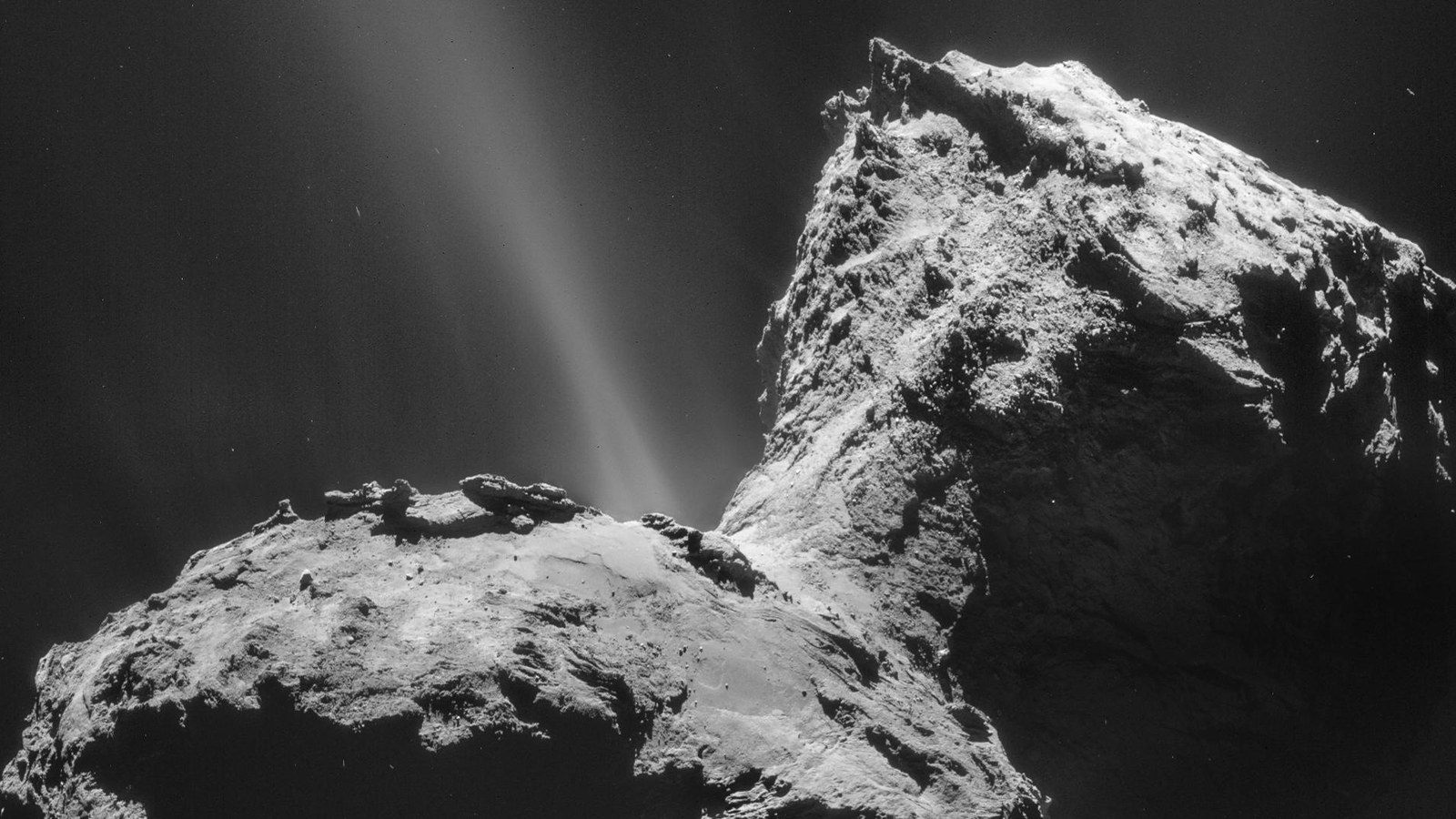Comet 67P/Churyumov-Gerasimenko 'shedding its skin' in the heat of the south

ESA/Rosetta/NAVCAM - CC BY-SA IGO 3.0.

Comet 67P/Churyumov-Gerasimenko could lose up to 20 metres of surface material from its previously unilluminated south side when it heats up, starting in May 2015. The increasing heat as the comet approaches the Sun will trigger this 'diet', during which gases and solid materials will be ejected into space. Horst Uwe Keller and Stefano Mottola from the German Aerospace Center (Deutsches Zentrum für Luft- und Raumfahrt; DLR), who have estimated the possible erosion of 67P using data acquired by the Optical, Spectroscopic and Infrared Remote Imaging System (OSIRIS), suggest that the northern hemisphere will lose much less mass. Their model reveals that, in its orbit around the Sun, the comet will lose a large part of its surface – particularly on its south side – during a brief but very intense 'summer'. "The comet sheds its surface almost constantly, revealing fresh material on its surface, which has not yet been aged by cosmic radiation," says Ekkehard Kührt, who leads the Rosetta mission science team at DLR.
Extreme seasons in the course of one orbit
It takes Comet 67P/Churyumov-Gerasimenko about six Earth years and five months to complete one orbit around the Sun. Its highly elliptical orbit takes it far away from the Sun for long periods of time. the next closest approach to the Sun (perihelion) will occur in August 2015. The inclination of comet's rotational axis – tilted 53 degrees with respect to its orbital plane – compared to just 23 degrees for Earth – means that the seasons in its two hemispheres are dramatically different. The northern hemisphere has a long, yet not particularly intense summer. The southern hemisphere summer will last for 10 months, but as it will occur during perihelion, it will be particularly severe. The Rosetta orbiter and its lander, Philae, will have an excellent view of the comet as it awakens and ejects gases and dust into space.
To estimate the loss of cometary material, the OSIRIS scientists used a surface model of the comet and divided it into 100,000 small triangles. It was necessary to consider the existence of shaded areas, for example in the craters, and that the rugged mountain walls reflect solar radiation onto nearby slopes, reinforcing it. "Our model calculation assumes that the water ice in the active regions is covered by a very porous, thin layer of dust," says Keller. In addition, the researchers assume in their simulation that about four times more dust than ice being ejected into space.
Twenty metres lost to space
"The result is that the southern side – not currently illuminated by the Sun and still new territory for the scientists – will lose up to 20 metres of its surface during this hot summer," says Mottola. "In the northern hemisphere, the outlook is quite different – only the peaks and cliffs will lose up to 10 metres." The current, particularly, active narrow region between the two comet lobes is calculated to be poorly lit during the overall orbit, and thus only moderately active generally.
The Philae lander will be able to take advantage of the summer; at its location near the equator, it may receive sufficient sunlight to 'wake up' from its current hibernation state. This might occur as early as March, but the probability that the Lander Control Center will resume contact and be able to send commands will be greatest in May.
The mission
Rosetta is a European Space Agency mission with contributions from its member states and NASA. The Rosetta lander, Philae, has been funded by a consortium led by DLR, the Max Planck Institute for Solar System Research (Max-Planck-Institut für Sonnensystemforschung; MPS), the French space agency (Centre National d'Études Spatiales; CNES) and the Italian space agency (Agenzia Spaziale Italiana; ASI).
